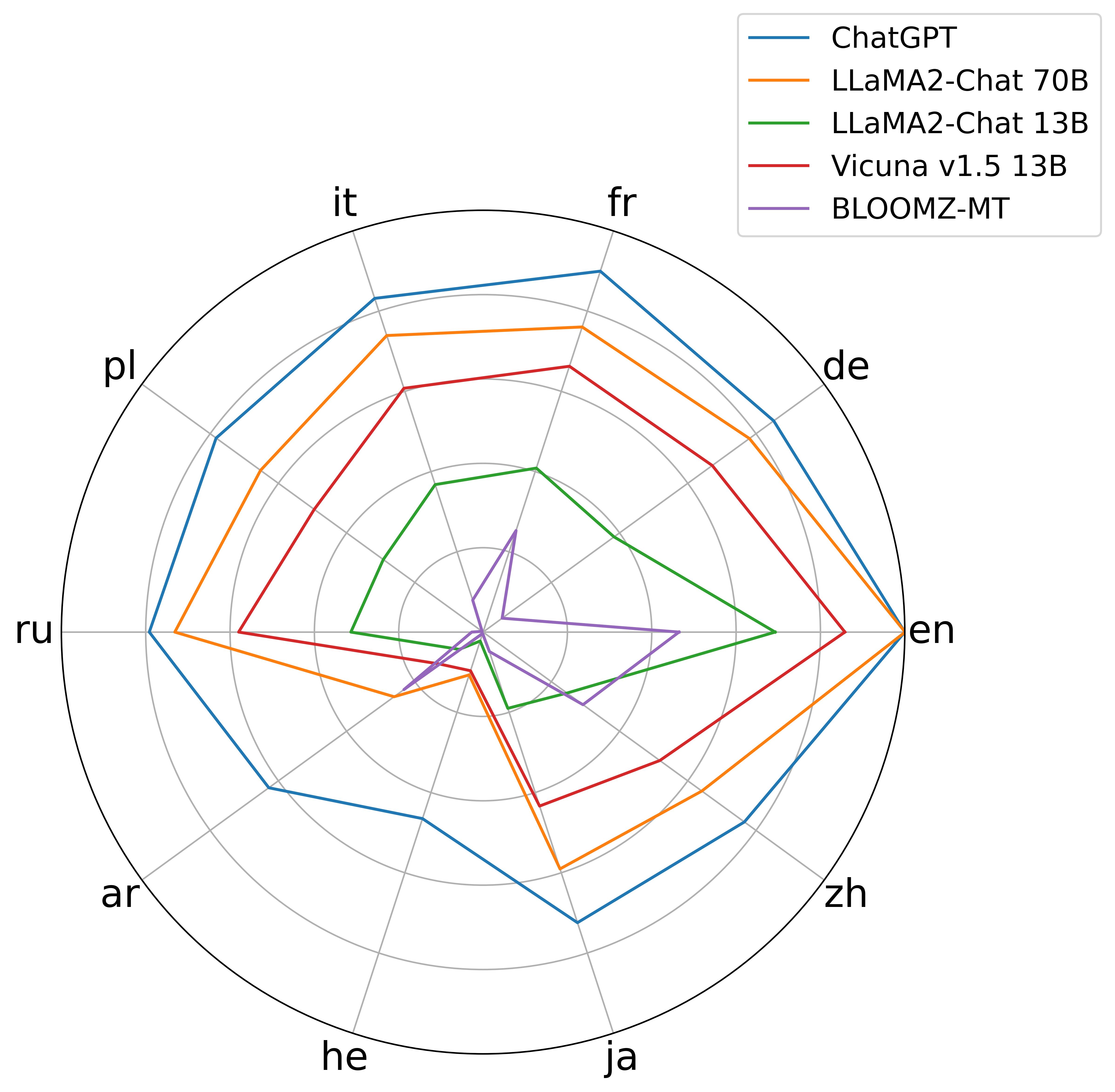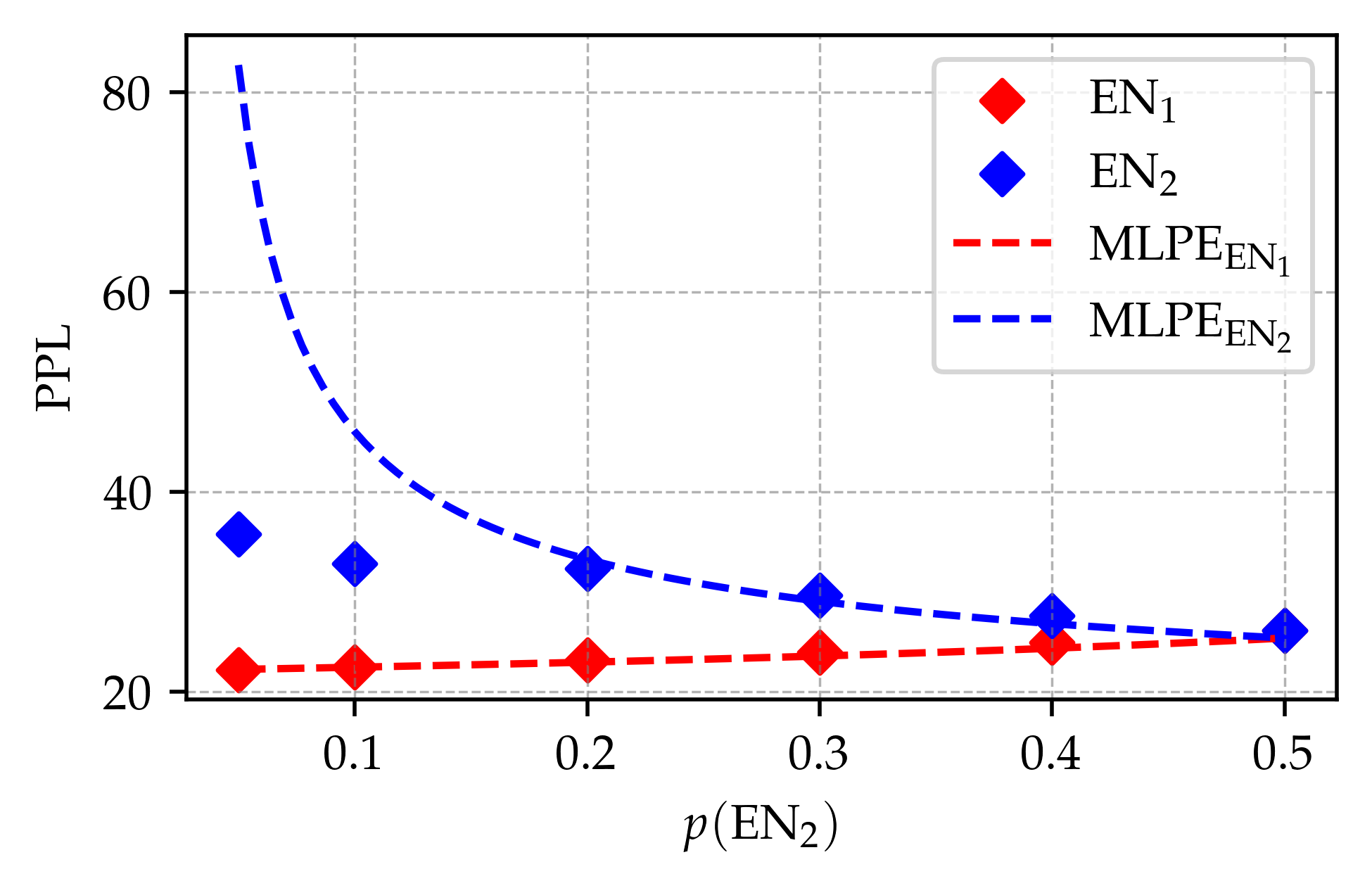mOthello: When Do Cross-Lingual Representation Alignment and Cross-Lingual Transfer Emerge in Multilingual Models?
2404.12444

0
0

Abstract
Many pretrained multilingual models exhibit cross-lingual transfer ability, which is often attributed to a learned language-neutral representation during pretraining. However, it remains unclear what factors contribute to the learning of a language-neutral representation, and whether the learned language-neutral representation suffices to facilitate cross-lingual transfer. We propose a synthetic task, Multilingual Othello (mOthello), as a testbed to delve into these two questions. We find that: (1) models trained with naive multilingual pretraining fail to learn a language-neutral representation across all input languages; (2) the introduction of anchor tokens (i.e., lexical items that are identical across languages) helps cross-lingual representation alignment; and (3) the learning of a language-neutral representation alone is not sufficient to facilitate cross-lingual transfer. Based on our findings, we propose a novel approach - multilingual pretraining with unified output space - that both induces the learning of language-neutral representation and facilitates cross-lingual transfer.
Get summaries of the top AI research delivered straight to your inbox:
Overview
- The paper "mOthello: When Do Cross-Lingual Representation Alignment and Cross-Lingual Transfer Emerge in Multilingual Models?" explores when cross-lingual representation alignment and cross-lingual transfer occur in multilingual language models.
- It investigates the factors that influence the development of these capabilities, such as the number of languages in the model, the language similarity, and the training data size.
- The researchers used the Othello game as a proxy task to study these phenomena, as it allows for systematic control and evaluation of cross-lingual transfer.
Plain English Explanation
The paper looks at how multilingual language models, which are trained on data from multiple languages, develop the ability to understand and translate between those languages. This is an important capability for tasks like machine translation and information retrieval across languages.
The researchers used a game called Othello as a way to study this. Othello is a simple board game, and the researchers created a version of it that can be played in different languages. By training the multilingual models on this game, they could see how the models' abilities to play the game in one language transferred to playing it in another language.
The key things the researchers looked at were:
- How the number of languages in the model affects cross-lingual transfer
- How similar the languages are to each other and how that impacts cross-lingual transfer
- How the amount of training data affects cross-lingual transfer
By using a simple game as a testbed, the researchers were able to systematically study these factors and gain insights into when and how multilingual models develop the ability to understand and work with multiple languages.
Technical Explanation
The paper investigates the emergence of cross-lingual representation alignment and cross-lingual transfer in multilingual language models. The researchers used the game of Othello as a proxy task to study these phenomena, as it allows for systematic control and evaluation of cross-lingual transfer.
They trained multilingual Othello models on datasets containing varying numbers of languages, with differing degrees of language similarity. The models were then evaluated on their ability to play Othello in languages seen during training, as well as in unseen languages.
The results showed that the number of languages in the training data, the similarity between those languages, and the overall amount of training data all played a significant role in the development of cross-lingual transfer capabilities. Models trained on a larger number of more dissimilar languages tended to exhibit stronger cross-lingual transfer, while increased training data size also improved cross-lingual performance.
Additionally, the researchers found that cross-lingual representation alignment, where the model's internal representations of words in different languages become aligned, was a key factor in enabling cross-lingual transfer. They developed an efficient approach to study this alignment and observed that it emerged at different stages of training depending on the specific characteristics of the multilingual dataset.
Critical Analysis
The paper provides a systematic and insightful investigation into the emergence of cross-lingual capabilities in multilingual language models. By using a controlled proxy task like Othello, the researchers were able to isolate and study the key factors that influence cross-lingual representation alignment and cross-lingual transfer.
One potential limitation of the study is that the Othello game, while a useful testbed, may not fully capture the complexity of real-world language understanding and translation tasks. The researchers acknowledge this and suggest that further research is needed to explore cross-lingual transfer in more realistic settings.
Additionally, the paper does not delve into the specific architectural choices or training techniques that may facilitate the development of cross-lingual capabilities. Further work could explore how different model architectures and training approaches affect the emergence of these capabilities.
Overall, the paper provides valuable insights into the factors that govern the emergence of cross-lingual understanding in multilingual language models, and lays the groundwork for future research in this important area of natural language processing.
Conclusion
The paper "mOthello: When Do Cross-Lingual Representation Alignment and Cross-Lingual Transfer Emerge in Multilingual Models?" offers an in-depth exploration of the factors that influence the development of cross-lingual capabilities in multilingual language models. By using the game of Othello as a proxy task, the researchers were able to systematically study the roles of language diversity, language similarity, and training data size in the emergence of cross-lingual representation alignment and cross-lingual transfer.
The findings of this research have important implications for the design and training of multilingual models, which are crucial for enabling effective communication and information exchange across language barriers. The insights gained from this study can help guide the development of more robust and versatile multilingual language models that can better serve the needs of a diverse, globalized world.
This summary was produced with help from an AI and may contain inaccuracies - check out the links to read the original source documents!
Related Papers
🔄
Measuring Cross-lingual Transfer in Bytes
Leandro Rodrigues de Souza, Thales Sales Almeida, Roberto Lotufo, Rodrigo Nogueira

0
0
Multilingual pretraining has been a successful solution to the challenges posed by the lack of resources for languages. These models can transfer knowledge to target languages with minimal or no examples. Recent research suggests that monolingual models also have a similar capability, but the mechanisms behind this transfer remain unclear. Some studies have explored factors like language contamination and syntactic similarity. An emerging line of research suggests that the representations learned by language models contain two components: a language-specific and a language-agnostic component. The latter is responsible for transferring a more universal knowledge. However, there is a lack of comprehensive exploration of these properties across diverse target languages. To investigate this hypothesis, we conducted an experiment inspired by the work on the Scaling Laws for Transfer. We measured the amount of data transferred from a source language to a target language and found that models initialized from diverse languages perform similarly to a target language in a cross-lingual setting. This was surprising because the amount of data transferred to 10 diverse target languages, such as Spanish, Korean, and Finnish, was quite similar. We also found evidence that this transfer is not related to language contamination or language proximity, which strengthens the hypothesis that the model also relies on language-agnostic knowledge. Our experiments have opened up new possibilities for measuring how much data represents the language-agnostic representations learned during pretraining.
4/15/2024

Multilingual Pretraining and Instruction Tuning Improve Cross-Lingual Knowledge Alignment, But Only Shallowly
Changjiang Gao, Hongda Hu, Peng Hu, Jiajun Chen, Jixing Li, Shujian Huang

0
0
Despite their strong ability to retrieve knowledge in English, current large language models show imbalance abilities in different languages. Two approaches are proposed to address this, i.e., multilingual pretraining and multilingual instruction tuning. However, whether and how do such methods contribute to the cross-lingual knowledge alignment inside the models is unknown. In this paper, we propose CLiKA, a systematic framework to assess the cross-lingual knowledge alignment of LLMs in the Performance, Consistency and Conductivity levels, and explored the effect of multilingual pretraining and instruction tuning on the degree of alignment. Results show that: while both multilingual pretraining and instruction tuning are beneficial for cross-lingual knowledge alignment, the training strategy needs to be carefully designed. Namely, continued pretraining improves the alignment of the target language at the cost of other languages, while mixed pretraining affect other languages less. Also, the overall cross-lingual knowledge alignment, especially in the conductivity level, is unsatisfactory for all tested LLMs, and neither multilingual pretraining nor instruction tuning can substantially improve the cross-lingual knowledge conductivity.
4/9/2024

Language Imbalance Can Boost Cross-lingual Generalisation
Anton Schafer, Shauli Ravfogel, Thomas Hofmann, Tiago Pimentel, Imanol Schlag

0
0
Multilinguality is crucial for extending recent advancements in language modelling to diverse linguistic communities. To maintain high performance while representing multiple languages, multilingual models ideally align representations, allowing what is learned in one language to generalise to others. Prior research has emphasised the importance of parallel data and shared vocabulary elements as key factors for such alignment. In this study, we investigate an unintuitive novel driver of cross-lingual generalisation: language imbalance. In controlled experiments on perfectly equivalent cloned languages, we observe that the existence of a predominant language during training boosts the performance of less frequent languages and leads to stronger alignment of model representations across languages. Furthermore, we find that this trend is amplified with scale: with large enough models or long enough training, we observe that bilingual training data with a 90/10 language split yields better performance on both languages than a balanced 50/50 split. Building on these insights, we design training schemes that can improve performance in all cloned languages, even without altering the training data. As we extend our analysis to real languages, we find that infrequent languages still benefit from frequent ones, yet whether language imbalance causes cross-lingual generalisation there is not conclusive.
5/14/2024
🔄
An Efficient Approach for Studying Cross-Lingual Transfer in Multilingual Language Models
Fahim Faisal, Antonios Anastasopoulos

0
0
The capacity and effectiveness of pre-trained multilingual models (MLMs) for zero-shot cross-lingual transfer is well established. However, phenomena of positive or negative transfer, and the effect of language choice still need to be fully understood, especially in the complex setting of massively multilingual LMs. We propose an textit{efficient} method to study transfer language influence in zero-shot performance on another target language. Unlike previous work, our approach disentangles downstream tasks from language, using dedicated adapter units. Our findings suggest that some languages do not largely affect others, while some languages, especially ones unseen during pre-training, can be extremely beneficial or detrimental for different target languages. We find that no transfer language is beneficial for all target languages. We do, curiously, observe languages previously unseen by MLMs consistently benefit from transfer from almost any language. We additionally use our modular approach to quantify negative interference efficiently and categorize languages accordingly. Furthermore, we provide a list of promising transfer-target language configurations that consistently lead to target language performance improvements. Code and data are publicly available: https://github.com/ffaisal93/neg_inf
4/1/2024